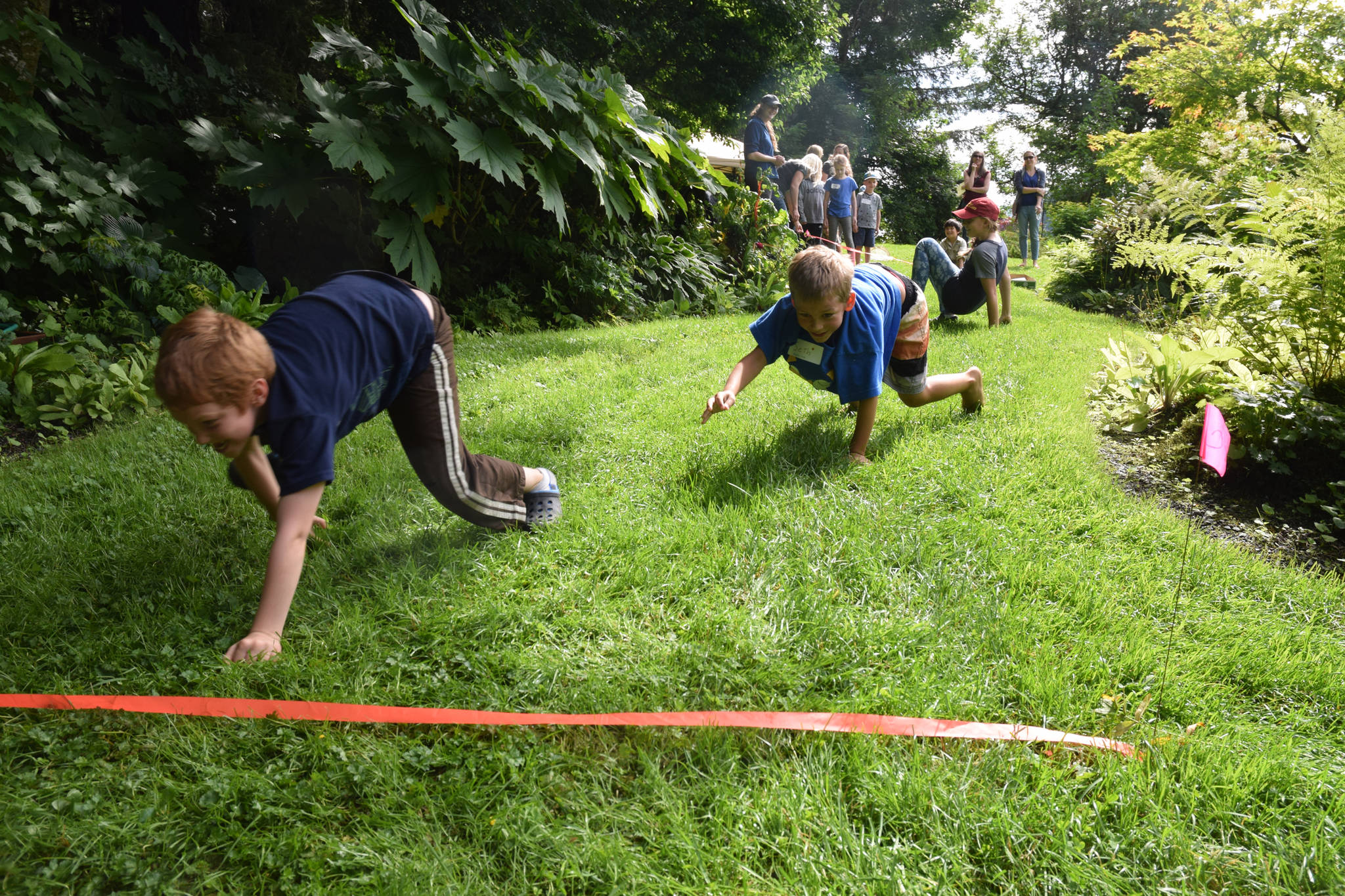They’re creepy. They’re crawly. And in Alaska, they’re the bane of any fishing expedition.
But bugs — even mosquitos — are also a vital part of the animal kingdom.
That’s something kids learned Saturday at the second annual Bug Day at the Jensen-Olson Arboretum. The event sold out on a sunny day. Thirty-five kids learned not to fear — and even enjoy — the the oft-unappreciated animals.
Some of the smallest members of the animal kingdom have an outsized impact on the environment, explained U.S. Forest Service technician Isaac Davis. Gingerly, Davis held a dragonfly of the libellulidae family by the wings, showing it to interested kids age 6-12.
“(bugs are) ecosystem glue, is how I like to explain it,” Davis said.
They’re a staple food for a host of birds and mammals and pollinate plants, he said.
But kids are socialized to fear them, something that’s not useful in a place like Southeast that lacks species that are a real threat to human health.
“People’s fear of insects is totally learned,” Davis said.
As a result, kids often don’t come to appreciate or learn as much about them as they do mammals or birds. How do you counteract that? By turning insect education into a fun day at the park. The Arboretum’s Bug Day “piggy backs” off Bug Days at venues across the country, said the Arboretum Education Coordinator Michelle Warrenchuk.
The three-hour event included bug hunting, a “spider walk” race, and face painting among its seven stations. Bug Day will happen next year and moving forward into the future, said Arboretum director Merrill Jensen. (Jensen is unrelated to the Arboretum’s namesake.)
“We hope that the kids take away some of the bugology that they’ve learned, or the entomology that they’ve learned and a little bit of local knowledge,” Warrenchuk said.
Somebody who studies insects is called an entomologist. Davis’ boss, Elizabeth Graham, is one of those professionals. She works for the USFS in her Juneau lab, studying bugs around the state with the mission of protecting and improving Alaska’s forest health.
Not only does Southeast Alaska lack bugs that can cause lasting bodily harm, but the wet forests of the Tongass are mostly impervious to threats which plague the rest of the state. Spruce beetles, which have wreaked havoc on trees in other parts of the state, aren’t a huge threat around Juneau.
Spruce beetles are present in Southeast, Graham said, but “the tree-killing insects don’t have as big of an impact because of our wet forests here.”
That’s not to say Southeast doesn’t have its issues with bugs. A warm, dry summer allowed sawfly populations in Southeast to explode. They’re doing damage to forests around Petersburg, Graham said, something she’s currently trying to track and educate people on.
The bugs don’t typically kill trees. They feed on foliage and can cause damage. It’s a natural occurrence, just not one Southeast typically has to deal with.
“We’ve had a pretty extreme summer in terms of drought stress, so we may actually see a little bit more mortality in Southeast, between that and defoliation,” Graham said.
Mellie Violis, 10, already knows she wants to be an entomologist when she grows up, and told Graham as much during Bug Day.
Bugs spark her curiosity. She says her and her twin brother Zack Beebe have seen about 22 beetles of a certain species this summer that’s understood to be native to Asia and Russia. She’s wondering what the “iridescent” bug could be doing here and if scientists are aware of its presence.
What does Violis like most about bugs?
“I think they look cute,” she said.
• Contact reporter Kevin Gullufsen at 523-2228 or kgullufsen@juneauempire.com. Follow him on Twitter at @KevinGullufsen.

